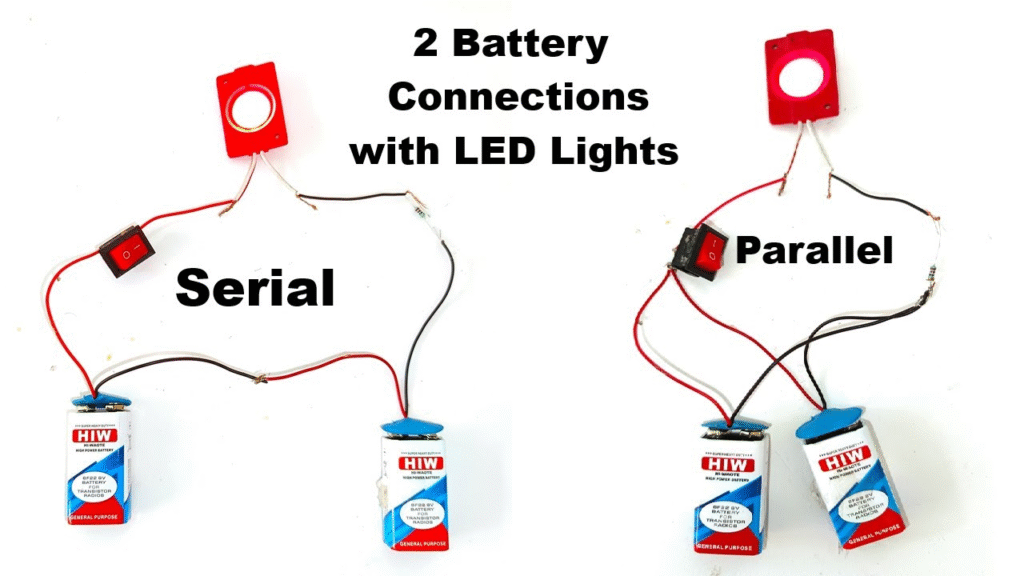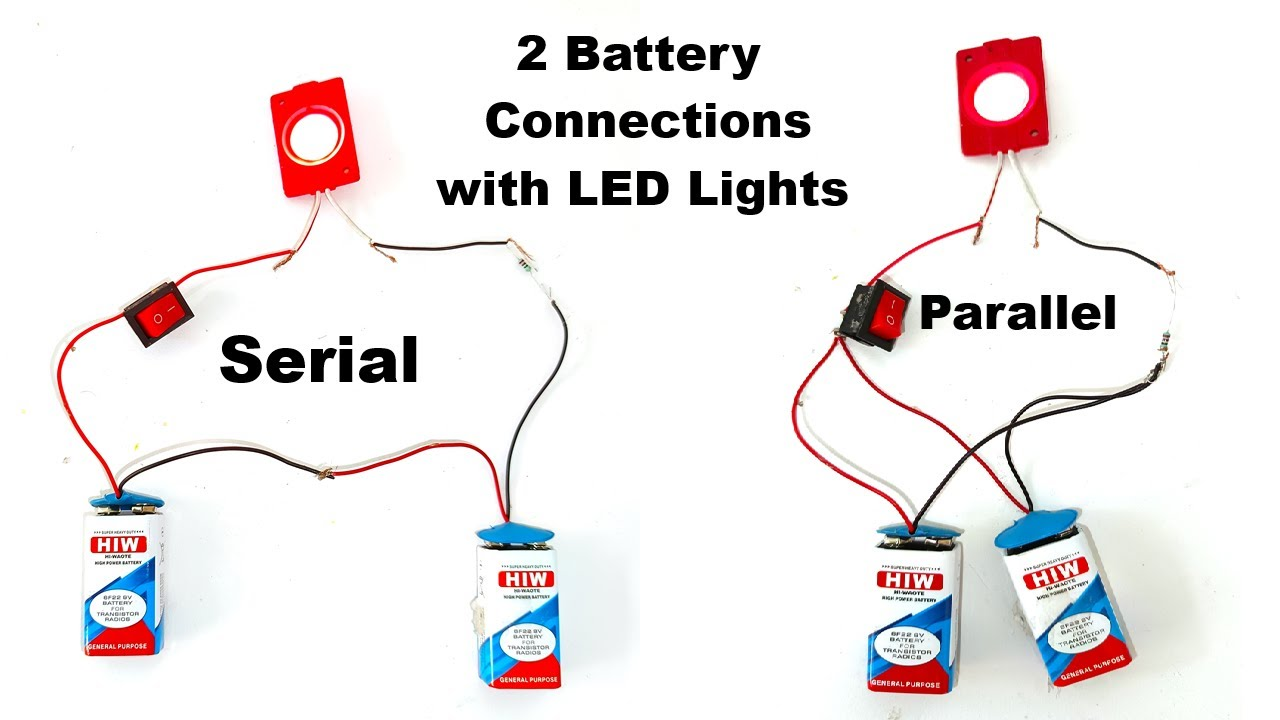Aim / Objective:
To demonstrate the effect of connecting two 9V batteries in series and parallel on voltage, current, and LED brightness, and to understand how switches control the circuit.

Materials Required:
- 2 × 9V batteries
- Battery holders (optional)
- 1 LED light
- 1 Switch
- Connecting wires
- Resistor (220Ω–470Ω) to protect the LED
- Breadboard or cardboard base (optional)
Working Principle:
- Series Connection: Connecting the positive terminal of one battery to the negative of the other increases the total voltage (V_total = V1 + V2 = 18V).
- Parallel Connection: Connecting positive to positive and negative to negative keeps the voltage the same (9V) but increases current capacity.
- The LED lights up when the circuit is complete, and the switch controls whether the LED turns ON or OFF.
- Using a resistor prevents the LED from burning due to excess current.
Procedure:
1. Series Connection:
- Connect the positive terminal of the first 9V battery to the negative terminal of the second 9V battery.
- Connect the remaining positive and negative terminals to the LED and resistor in series.
- Insert a switch in the circuit to control the LED.
- Turn ON the switch and observe the LED brightness (it should glow brighter than with a single battery).
2. Parallel Connection:
- Connect positive terminals together and negative terminals together.
- Connect the LED and resistor in series to the combined positive and negative terminals.
- Insert a switch in the circuit.
- Turn ON the switch and observe the LED brightness (it should be similar to a single battery, but battery life lasts longer).
Observation:
- Series Connection: LED glows brighter due to higher voltage (18V).
- Parallel Connection: LED glows similar to single battery, but the circuit can supply more current for longer time.
- The switch successfully controls turning the LED ON and OFF in both setups.
Conclusion:
- Series connection increases voltage, making devices brighter or faster.
- Parallel connection increases current capacity, allowing devices to last longer.
- The experiment demonstrates basic circuit connections, battery configurations, and switch operation in a simple LED circuit.

